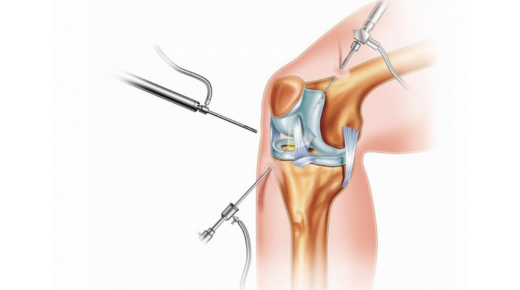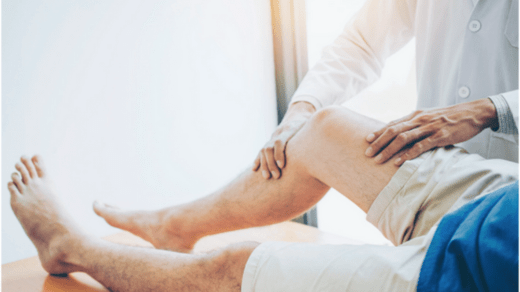1. Introduction to Arthroscopic Shoulder Surgery
Arthroscopic shoulder surgery is a minimally invasive procedure used to diagnose and treat various shoulder conditions, such as rotator cuff tears or shoulder impingement, through small incisions.
2. Understanding Arthroscopic Surgery Scars
Arthroscopic surgery scars are the result of small incisions made during the procedure to insert surgical instruments and a camera into the shoulder joint.
3. Size of Incisions
Incisions for arthroscopic shoulder surgery are typically small, ranging from 5 to 10 millimeters in length, depending on the complexity of the procedure and the surgeon’s technique.
4. Location of Scars
Arthroscopic shoulder surgery scars are usually located around the shoulder joint, often in the front or back of the shoulder, where the instruments are inserted.
5. Scar Appearance
Initially, arthroscopic surgery scars may appear as small red or pink marks on the skin. Over time, they usually fade and flatten, becoming less noticeable.
6. Scar Healing Process
The healing process for arthroscopic surgery scars involves the formation of new skin tissue and collagen fibers, which gradually remodel and strengthen the scar tissue.
7. Scar Management
Scar management techniques, such as massage, silicone gel sheets, or topical treatments, may help improve the appearance and texture of arthroscopic surgery scars.
8. Scar Care Instructions
Patients receive scar care instructions from their surgeon, which may include keeping the incisions clean and dry, avoiding sun exposure, and gently massaging the scars to promote healing.
9. Pain and Discomfort
Some patients may experience mild pain or discomfort around the arthroscopic surgery scars during the initial healing period, which can be managed with over-the-counter pain medication.
10. Swelling and Bruising
Swelling and bruising around the arthroscopic surgery scars are common in the days following the procedure but typically subside within a few weeks.
11. Scar Sensation
Patients may experience numbness, tingling, or itching around the arthroscopic surgery scars as the nerves in the skin heal, which is usually temporary.
12. Scar Revision
In some cases, scar revision surgery may be considered to improve the appearance of arthroscopic surgery scars, although it is not typically necessary for most patients.
13. Scar Hypertrophy or Keloids
Rarely, arthroscopic surgery scars may develop into hypertrophic scars or keloids, which are raised, thickened scars that extend beyond the boundaries of the original incision.
14. Scar Prevention Techniques
To minimize the risk of hypertrophic scars or keloids, surgeons may use techniques such as meticulous wound closure, proper suture placement, and postoperative scar management.
15. Scar Assessment
During follow-up appointments, the surgeon assesses the appearance and healing of arthroscopic surgery scars, providing guidance on scar care and addressing any concerns.
16. Psychological Impact
Arthroscopic surgery scars may have a psychological impact on some patients, affecting self-esteem or body image, although most individuals find that scars fade and become less noticeable over time.
17. Scar Visibility
The visibility of arthroscopic surgery scars varies depending on factors such as skin tone, scar location, and individual healing characteristics.
18. Scar Acceptance
Over time, many patients come to accept and even embrace their arthroscopic surgery scars as symbols of healing and resilience, rather than sources of insecurity.
19. Supportive Resources
Patients undergoing arthroscopic shoulder surgery may benefit from supportive resources, such as counseling or support groups, to address any emotional concerns related to scarring.
20. Scar Education
Educating patients about arthroscopic surgery scars, including their appearance, healing process, and management techniques, helps alleviate anxiety and promote realistic expectations.
21. Scar Satisfaction
Studies show that the majority of patients are satisfied with the appearance of their arthroscopic surgery scars and experience minimal long-term effects on quality of life.
22. Scar Visibility Over Time
With proper scar care and management, arthroscopic surgery scars typically become less visible and noticeable over time, blending into the surrounding skin.
23. Scar Resilience
Skin has remarkable resilience, and arthroscopic surgery scars often continue to improve in appearance and texture for up to a year or more after the procedure.
24. Scar Appreciation
Many patients come to appreciate their arthroscopic surgery scars as reminders of their journey to recovery and the successful resolution of shoulder problems.
25. Conclusion
Arthroscopic shoulder surgery scars are a natural part of the healing process and typically fade and become less noticeable over time. With proper scar care, support, and patience, patients can achieve optimal outcomes and embrace their scars as symbols of strength and healing.





